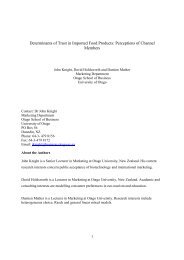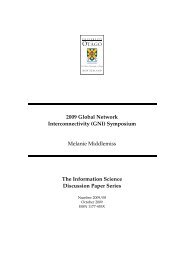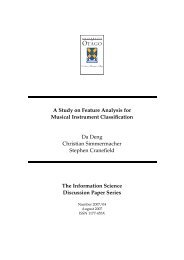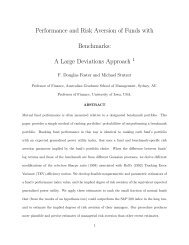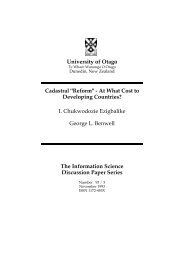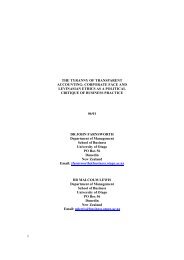Where is R2P grounded in international law? Anne-Marie Judson A ...
Where is R2P grounded in international law? Anne-Marie Judson A ...
Where is R2P grounded in international law? Anne-Marie Judson A ...
Create successful ePaper yourself
Turn your PDF publications into a flip-book with our unique Google optimized e-Paper software.
<strong>in</strong>structions but nevertheless act<strong>in</strong>g as officers of the state they used the means placed<br />
at their d<strong>is</strong>posal to violate <strong>in</strong>ternational <strong>law</strong>. Such conduct could be attributable to<br />
two or more states when the orders and control of a situation were spread between<br />
states. The message was clear, <strong>in</strong>ternational courts would not tolerate violations or<br />
breaches of <strong>in</strong>ternational <strong>law</strong>, if the violation and breaches of these <strong>in</strong> any manner or<br />
form could be attributable to the state. If a violation or breach of an <strong>in</strong>ternational<br />
treaty, statute or convention had taken place the attribution of the state would be <strong>in</strong><br />
question. Th<strong>is</strong> emphasized that states have duties to prevent violations and breaches<br />
of <strong>in</strong>ternational <strong>law</strong>, show<strong>in</strong>g once aga<strong>in</strong> that <strong>R2P</strong> did not contribute any new<br />
elements to the ex<strong>is</strong>t<strong>in</strong>g frameworks of <strong>in</strong>ternational <strong>law</strong> with<strong>in</strong> the Courts.<br />
The Rule of Law <strong>in</strong> Chapter 3 further emphasized the responsibilities, duties and<br />
obligations of the state. Firstly it showed that the Charter of the United Nations and<br />
the International Court of Justice Statute re<strong>in</strong>forced these duties. Secondly, they were<br />
b<strong>in</strong>d<strong>in</strong>g on all states that were a party to them. It also showed they were truly<br />
universal <strong>in</strong> scope. Each state that had signed these treaties was under an obligation to<br />
perform these duties <strong>in</strong> good faith. In th<strong>is</strong> light it showed that <strong>in</strong> any conflict that arose<br />
between the Charter and any other agreement <strong>in</strong> <strong>in</strong>ternational <strong>law</strong>, the Charter<br />
prevailed. The Vienna Convention (1969) showed that all treaties were b<strong>in</strong>d<strong>in</strong>g on<br />
states that were a party to them. It also showed that certa<strong>in</strong> treaties, statutes and<br />
conventions were considered customary <strong>law</strong> and these documents were non-derogable<br />
<strong>in</strong> <strong>in</strong>ternational <strong>law</strong>. Non-limitations were shown to <strong>in</strong>clude war crimes and crimes<br />
aga<strong>in</strong>st the peace under the Nuremberg Charter and the Hague Conventions (1949)<br />
and genocide under the Convention on the Prevention and Pun<strong>is</strong>hment of the Crime<br />
of Genocide (1948).<br />
Lastly Chapter 3 def<strong>in</strong>ed ethnic cleans<strong>in</strong>g, genocide, war crimes and crimes aga<strong>in</strong>st<br />
humanity. Ethnic cleans<strong>in</strong>g was found under the Rome Statute of the International<br />
Crim<strong>in</strong>al Court (2002), under the crimes of apartheid, war crimes and genocide. The<br />
Convention on the Prevention and Pun<strong>is</strong>hment of the Crime of Genocide (1948)<br />
broadly def<strong>in</strong>ed the protection of an ethnic, racial or religious group. The<br />
International Convention on the Elim<strong>in</strong>ation of all Forms of Racial d<strong>is</strong>crim<strong>in</strong>ation<br />
(1966) further provided support for non-d<strong>is</strong>crim<strong>in</strong>ation on the grounds of race, colour<br />
or national or ethnic orig<strong>in</strong>. The last showed how states were responsible for the<br />
speedy elim<strong>in</strong>ation of racial d<strong>is</strong>crim<strong>in</strong>ation <strong>in</strong> all its forms and manifestations. Each<br />
<br />
125




